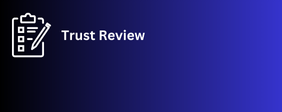is to make your website’s pages relevant to kazakhstan phone number data the keywords and topics you want to be found for. When Google finds relevant, well-optimized content on your website, those pages tend to rank higher in search results, thus increasing your website’s visibility and organic traffic.
Why is On-Page Optimization important?
On-page optimization is a crucial part of any effective SEO strategy for several reasons:
Keyword Relevance : On-Page optimization ensures that your page content aligns with the keywords and topics you want to target. This allows search engines to clearly identify your site’s theme and associate it with relevant user queries.
Improved User Experience: By optimizing your website’s structure and content, you make it easier for visitors to navigate, find relevant information, and interact positively with your site. This helps reduce bounce rates and increase dwell time, factors that Google considers in its ranking algorithms.
Gaining Authority : Well-optimized and informative content helps establish your authority and expertise in your niche. The more trust visitors have in your site, the more likely they are to recommend and share it, which can lead to natural backlinks and organic growth.
Market Competition : In many industries, online competition is fierce. On-Page optimization can be the key to differentiating your website from your competitors and putting you ahead in search results.
Main On-Page Optimization Techniques
Below, we present some of the main On-Page optimization techniques you can implement to improve mastering cold calling with your website’s SEO:
1. Keyword Research as a Component of On-Page SEO Optimization:
Conduct careful research on keywords relevant to your niche and incorporate them naturally into titles, subtitles, and page content.
2. Titles and Meta Descriptions:
Create compelling, optimized titles and meta descriptions containing relevant keywords to increase your click-through rate in search results.
3. Friendly URLs:
Use descriptive, user-friendly URLs, including keywords when possible, to make it easier for search engines and users to understand your content.
4. Heading Structure (H1, H2, H3):
Organize your website content using the correct heading hierarchy, making it easier for search engines to read and index.
5. Image Optimization:
Compress and optimize images to reduce page load time, and use alt attributes with relevant aero leads keywords to help search engines understand the content of the images.
